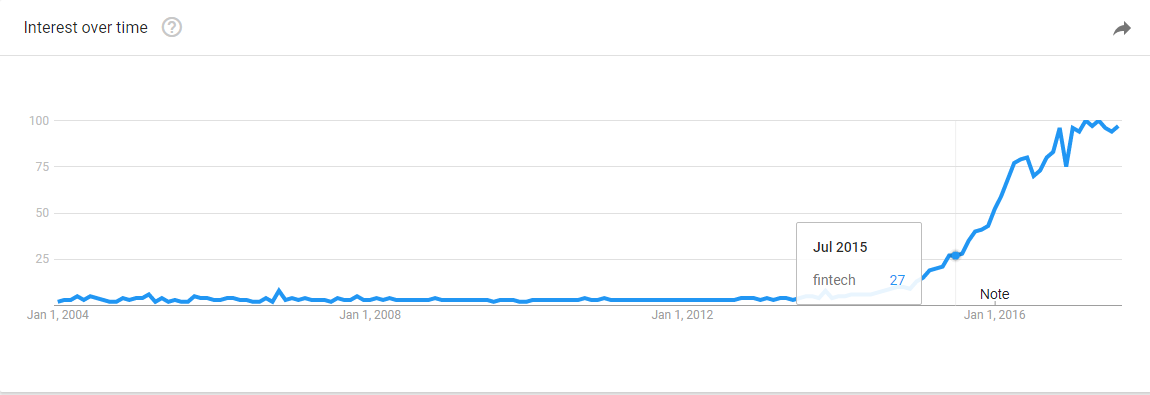What is innovation? Big data answer
In spite of its wide meaning, the idea of innovation is nowadays related to the field of technology. This is what Catchy found out thanks to a two-month research on Twitter. While the world is talking about the frontiers of the technological development (#bigdata, #ai,#IoT), Italy has focused its attention on business and entrepreneurial aspects, proving its lack of interest in technological development. However, it’s the social innovation in which we seem to be pretty good at and, even in this field, the technology has something to do with it.
Innovation is something that can change history, creating a before and an after. It’s a turning point in one of the aspects of life. This is what you get if you are looking up “innovation” in a dictionary: “each news, each change, each transformation that can radically alter a political or social system, a production method, a technique” (Treccani). As John Sculley – former Apple’s CEO – claimed, innovation has never came through bureaucracy or hierarchy, but only through the people. So, what better way of looking at people and at the data they produce to understand what innovation actually is? Catchy tried to do this, fishing in the big data of Twitter from Italy and from all over the world, totalling some 1,5 millions tweets.
The short-circuit is immediately evident: analyzing the microposts, it’s clear that the #BigData are some of the lead characters in the field of innovation. That is not surprising, but it is certainly relevant: looked through the perspective of ICT, “innovation” means “technology”. Particularly, just look at the chart of the most mentioned hashtags and the hashtag “innovation” to understand what are the main issues as regards the technology.
1- Internet of things
Right after the hashtag #tech, the most recurring term along with #innovation, we can find #IoT, the “Internet of Things”. This is proof that the web, the connection between people, is expanding itself even to the objects, describing an actual macro-configuration that is not only social, but also technical.
2-AI
In fourth place we can find a short but meaningful term: #AI, artificial intelligence. An issue widely supported and echoed by literature and cinematographic heritage, but that has not lost its evocative power, as evidenced by the news according to which Facebook “would have killed two chatbot that had started to speak in an obscure language”. A great hyperbole, source of misunderstanding: that incomprehensible crosstalk doesn’t prove that the two chatbot created their own communication system. This only means, indeed, that their language was incomprehensible. By the way, the artificial intelligence establishes itself as an effective and contemporary field of development, oriented to the automation of choices in terms of conduct of connected object and it obviously refers to the Internet of Things
3- Big Data
As already mentioned, that’s to be expected: Big Data hear themselves talk. Yet, the hashtag that held the fifth place proves that the Twitter population fit that all in one discourse. In fact, the Big Data are the link between the Internet of Things and artificial intelligence. Only the big amount of data produced by the objects and by the hyper-connected people makes possible the start of the automatic learning cycles, the so-called Machine Learning, the frontier of automation.
The fact that #IoT, #BigData and #ai are the focal points of one unique big discourse is suggested by the data themselves: the triple repeats itself even analyzing the most frequent terms related to the words: “ai” and “big data” are the words most frequently associated to #IoT.
This is about an issue which remains very stable over time if you look at the volume of the different hashtags over the whole period of the research. Lines are rarely intertwined, showing a regular distribution.

4- Startup
Let’s go back. As you have surely noticed, we did not mention the fourth hashtag. At this point the data collected seem to ask a question to the interpreter: “technological innovation is great! but who makes that?”. #Startup businesses are the main characters of the innovation mentioned on the chirping social network: a number which nearly reaches the #ai and #bigdata ones.
5- Fintech
Many people would be ready to bet on the next rise of the hashtag at the bottom of the chart. If you look at the Google trends, you would trust them. Other people, instead, are already announcing its crisis, as you could have read on our column Catchin-edge. We are talking about the financial technology, or identified by the hashtag #fintech. To Twitter this means, above all else,“bitcoin” and “blockchain”,the most frequently associated words. The disintermediation and decentralisation process allowed by information and communication technologies is the basics of the block-chain and BitCoin technological improvements. The fintech of the Bit Coin and of the similar crypto-currencies is indeed a case in point of what Sculley suggested: innovation has never came through the boureaucracy and hierarchy, the thing that the blockchain prodes itself to bypass with its decentrated distribution of the monetary value.

Interest over time for “fintech”, worldwide, from 2004 to today, Google Trends.

Interest over time for “bitcoin”, worldwide, from 2004 to today, Google Trends.
A curiosity: the nation and the city that have the highest search volumes for the term”Bitcoin” are Nigeria and its capital Lagos. Here the central bank partially banned Bitcoins, which were affecting the value of the official currency of the country. As a companion there isn’t any G8 country in the chart: just Bolivia, Ghana, South Africa and Slovenia.

Interest over time for “bitcoin”, worldwide, last 12 month, Google Trends.
Innovation, technology, communication: a faithful portrait?
Let’s summarize: innovation, according to the macro-discourse we have outlined by querying Twitter, is a technological issue driven by the multiplication of data made available by communication technologies. But is this a faithful portrait of technological innovation in the world? Only partially.
The answer comes by observing the patent application trend available on the WIPO international agency’s website, which collects data from various regional bodies around the world. By dividing data by application area this are the results:

Between 2004 and 2006, around the advent of the first smartphones, there is a noticeable increase in some sectors, among which, by 2015, the most evident are exactly that of computer technology, followed by electrical machinery and then by digital communication, that is the software component of the innovation process we are talking about. How can we explain the second step of the podium? By the fact that we are becoming more and more electricity users. And if the battery industry does not sound a big frontier to you, it means you are neglecting what’s going on in the automotive world. Yet, no worries since, as we have seen, the “great people” of Twitter is also doing so, or, at least it is not commenting on the green side of technological innovation.
Is it better outside the boundaries of Twitter? If we try to look at the Google Trends search curves for the term “innovation” we find two major related topics: “technology” and “enterprise”. Two data alligned with our Twitter-led rankings guided by the hashtags #IoT and #startup. Yet no “green”.

Jump-start the Italian start-up
Taking into account the centrality of “enterprise” and “startup” in conversations about innovation help us not to consider Italy as if it were busy with a completely different discourse. If we restrict the query to tweets written in Italian (i.e. to the precise term “innovazione”), the result is a very different chatting flow from that expressed by the Anglophone sphere. The very hashtag #startup stands in the first place among those associated with “innovation”, detaching many others hashtags belonging to the same semantic area: “SME” (PMI), “business” (#impresa), “innovation” (#innovazione). #Bigdata occupies the 7th place. There’s no trace of #AI and #IoT in the top ten, while the 3rd and 8th place are respectively occupied by “Rome” (#Roma, probably due to the large number of conferences and specialistic events held in the capital) and “business consultant” (#commercialista). The Italian adventure of innovation has companies as protagonist, but it seems to be a bureaucratic than a technological one. An adventure in which the Ministry of Economic Development has tried to take a role in an attempt to make Italy “a more hospitable country for business startup innovations“.

Is the Italian genius lost?
Due to its lingering in discussing the problems posed by this facet of the technological innovation and from several points of view the Belpaese shows a certain delay in the international comparison. First of all, the number of patent application in proportion to the population (Resident applications per million population). The average WIPO’s data from 2004 to 2015 draw a five-speed world map placing Italy in the third range.

Resident applications per million population (by origin). WIPO IP Statistics Data Center
The Italian delay is also well displayed by Google search curves. The search for “innovation” in the last 12 months does not return any Italian city among those most interest in the topic. Neither Milan nor the much twitted Rome seems to be metropolis of innovation. Nothing changes if we look at the interest generated by the “lean startup” topic, so interesting for the Italian Twitter-sphere. Certainly nothing can disturb the dominance of San Francisco, though we still can’t find Milan and Rome in the list. The first European city stands in the fourth place: Berlin.

Social rather than technological: Italy ahead
Despite of all of the above, is still possible to find Italy among the most enthusiastic nations in the field of innovation. But that’s a different kind of innovation which involves technology as a tool rather than a goal: social innovation. Among the queries most associated with the term “innovation” in Italy over the last 12 months, “social innovation” (innovazione sociale) has stood at the second place between “technological innovation” (innovazione tecnologica) and “digital innovation” (innovazione digitale).

To find the “social innovation” query among those most frequently associated with “innovation” all over the world you have to go down to the eighth place. Perhaps this is the side of innovation that shows Italy among the leader. Talking about social innovation also means talking about digital, and it is not by chance that the DSI4EU project (Digital Social Innovation for Europe) reports a very active Italy in researching innovative uses of social media aimed to promote change in citizens communities.

In short, crossing different big data sources, the portrait of the Italian innovation shows several peculiar facets. To paraphrase the line of the NASA engineer Gene Kranz interpreted by Ed Harris in Apollo 13, Italians do not care much about what an innovation has been designed for. They are more interested in what technological innovation can be used for, and, above all, how a business can do that.
Francesco Nespoli









